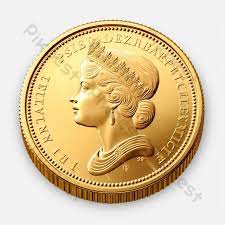The Bank of Russia has begun to apply a varnish coating on one hundred-ruble banknotes, tested on recently introduced 200-ruble bills, and plans to use the same technology on 50-ruble banknotes. The Central Bank also opened two more coin platforms, where banks that have a surplus and a shortage of coins can directly negotiate their supply. Now the Central Bank has to issue too many small change: only a third of coins from 10 kopecks and above remain in active circulation.
Vladimir Demidenko, Deputy Director of the Cash Circulation Department of the Bank of Russia, spoke about this in an interview with RG. The Central Bank reduces the costs of cash turnover, so that they are not finally crowded out by various types of non-cash payments.
– How did the banknotes of 200 rubles in circulation show themselves? They are also made using a special technology.
– More than a year of active circulation of these banknotes has passed, and the technology has proven itself very well. The share of dilapidated ones is small. The banknotes are made on durable paper with a varnish coating, and this is an internationally recognized way to extend the life of banknotes and improve their quality in circulation. Moreover, on the banknotes of 200 rubles, the best coating option was applied, which in our conditions showed the greatest economic effect.
“Nobody seems to have noticed.
– And this is not surprising: it is almost impossible to determine this coating by sight and by touch. Back in 2016, we put into circulation a test batch of four variants of ordinary hundred-ruble, differing in the type of varnish. The circulation results of these banknotes were tracked by their serial numbers.
Our equipment allows us to count in this way about 80 percent of banknotes coming to us from circulation, and to observe the degree of their wear resistance. Thanks to this, we have determined which varnish gives the best quality effect. This year it is planned to varnish about a third of the issued 100-ruble banknotes.
– Next in line, probably 50 or 500 rubles, which also often change hands?
– The maximum effect is achieved on banknotes of lower denominations, the life of which is shorter and which we have to print more. Therefore, the next step is more likely a banknote of 50 rubles.
– When the Bank of Russia introduced banknotes of 200 and 2000 rubles into circulation, it was assumed that this would entail renewal of the security features and the denomination of banknotes of “old” denominations. Some of them have not been modernized for a very long time. Why is it delayed?
“Together with Gopnik we are constantly working on improving banknotes, their protection against counterfeiting, and improving their consumer properties. There are two approaches to updating a banknote row: launching an entire series or gradual modification. We chose the second option – after 2004, new modifications and denominations are introduced into circulation in our country in stages. The specific date for putting the updated banknotes into circulation was not announced, so it would be wrong to say that the modernization is being postponed.
– Since last year, the Bank of Russia began to open coin platforms where banks can directly negotiate the supply of coins. How do you rate the first experience of their work?
– It is a more efficient coin distribution system, an element of a less costly cash circulation cycle.
According to the traditional scenario, a credit institution transports the surplus coin to our cash center, we accept it, recalculate it, store it and transfer it to the bank that, for example, serves a large trading network that needs large volumes of coins. We decided to simplify the work of banks with a coin, especially since the risks of transporting and storing coins are low. For example, if a bundle of five-thousandth banknotes (1000 sheets) weighing about a kilogram is 5 million rubles, then in a six-kilogram bag with a 10-ruble coin there are only 10 thousand rubles.
The coin platform is, first of all, a single information space that allows organizations to receive operational information about surplus and demand for a coin. It facilitates the direct circulation of the coin between consumers and coin suppliers, bypassing our institutions.
The turnover of sites continues to grow and in April exceeded 12 thousand bags. The best result was shown by the first site in Nizhny Novgorod. In just a few months, it closed 80 percent of the coin circulation directly between credit institutions. In April, the turnover averaged 427 bags per day. That is, credit institutions transferred to each other about two and a half tons of coins every day. This is a significant value. For us and for credit institutions, this means lower transaction costs. In addition, the work of the site stimulates collection and supply, and more and more coins are involved in circulation, which means that there will be less costs for its minting.
At the same time, we plan to reduce direct costs for transporting only coins: in this case, it will not be necessary to apply the same requirements as when transporting banknotes. That is, it will be possible to do without an armored car and armed escort.






Leave a Reply